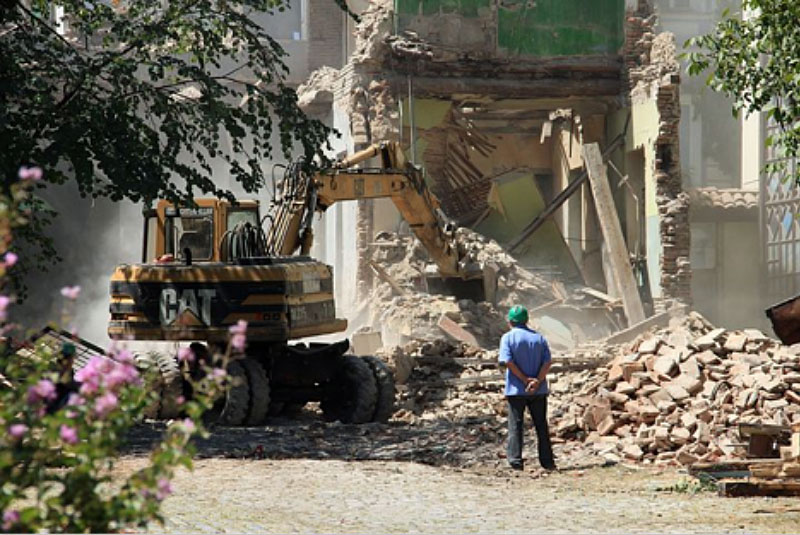
Safety is a priority for the health and wellbeing of occupational workers, homeowners, and older adults everywhere.
On the heels of National Safety Month, this is a time to recognize safety hazards that threaten workers or individuals.
This is why regulations and precautions bringing awareness to safety are enforced in occupational settings.
Following codes, understanding violations of safety, and protecting people is not an option, but a necessity.
One hazard that has remained pertinent to individuals is asbestos exposure.
As a known human carcinogen, asbestos is a fibrous mineral that has been an ongoing risk for anyone who comes in contact with exposed asbestos-containing materials.
(Asbestos is no longer ubiquitous in building materials, and since it’s proven to cause cancer, many Americans likely assumed the substance had been banned entirely. But not only is asbestos a naturally occurring mineral, it is also still used to make some household products. Science correspondent Miles O’Brien reports on “broken” U.S. regulation and why we continue to import the carcinogen. Courtesy of PBS NewsHour and YouTube. Posted on Mar 13, 2019.)
This mineral was an additive in products up until it was identified as detrimental to human health in the 1960s.
Afterward, asbestos regulations began in the 1970s.
The Environmental Protection Agency, U.S. Congress, Occupational Safety and Health Administration, Mine Safety and Health Administration, and Consumer Product Safety Commission have all mandated and created laws, acts, and regulations to protect those who may be affected by this carcinogen.
Although major steps have been taken to ensure exposure is reduced through federal and state efforts, one percent of asbestos is still allowed in construction and building materials today.
Asbestos fibers are microscopic, and no amount of exposure is safe, as it still poses a threat when inhaled or ingested.
Pleural effusions, lung cancer, asbestosis, and various types of mesothelioma cancer are some of the devastating diseases and health conditions that derive from exposure to asbestos.

These health conditions primarily affect those in occupational fields such as construction workers, firefighters, home renovators, and factory workers.
Additionally, due to its popular use in military bases, vehicles, and aircraft, veterans make up almost a third of all diagnoses.
However, the issue is not easily resolved from not working in these occupations, as secondary exposure is another way that individuals can be exposed to asbestos.

Heather Von St. James is a 14-year mesothelioma survivor who was diagnosed with mesothelioma because her father worked extensively in a place that had asbestos-containing materials.
The asbestos fibers would stick on his clothing, where he would unknowingly bring them into his home.
At an early age, this is where Heather was first exposed.
Initially, Heather’s prognosis was 15 months.
Due to proper diagnosis and a fast-tracked treatment plan by doctors, Heather was able to undergo an aggressive extrapleural pneumonectomy surgery where one of her lungs was removed.
(Learn More. The story of Heather Von St. James, a mesothelioma cancer survivor who has fought incredible odds with her family. Courtesy of the Mesothelioma Cancer Alliance and YouTube.)
Today, Heather is cancer-free, and she continues to fight and raise awareness about this toxin.
Her story is an example of why safety is vital and that the acts, codes, and regulations put into place are fundamental.
In addition to June’s National Safety Month, June 20th is also celebrated as Clean Air Day.
Asbestos is an airborne toxin, one of many that can quickly become detrimental to one’s health.

Asbestos is generally an indoor air pollutant, along with dust and mold.
Fuel-burning combustion appliances and specific wood finishing or furniture can cause difficulty breathing, trigger reactions, worsen already existing health conditions, and may lead to cancer or even heart disease.
These issues are magnified by inadequate air circulation, meaning proper ventilation is crucial.
Air that is stale or saturated with airborne pollutants is unsafe to breathe.
In some cases, this is not enough, and abatement with professionals is required.

When there is a likelihood of asbestos, especially when one knows that deterioration, removal, or disturbance will expose its fibers, it is better to hire a team to abate the area rather than taking on the job alone.
As mentioned with the indoor air pollutants, there are dozens of other toxins that are safety hazards.
Acknowledging these endangerments allows employees and those trying to protect their safety to improve safety measurements.
Safety should not be an issue, and recognizing these violations, as well as known carcinogens such as asbestos is a step in protecting the rights’ of workers and individuals.
Other Resources
- https://www.epa.gov/laws-regulations
- https://www.congress.gov/search?q={%22source%22:%22legislation%22,%22search%22:%22asbestos%22}&searchResultViewType=expanded&KWICView=false
- https://www.congress.gov/search?q={%22source%22:%22legislation%22,%22search%https://www.osha.gov/
- https://www.msha.gov/
- https://www.cpsc.gov/
AST strives to meet a 3 STAR trustworthiness rating, based on the following criteria:
- Provides named sources
- Reported by more than one notable outlet
- Includes supporting video, direct statements, or photos


















